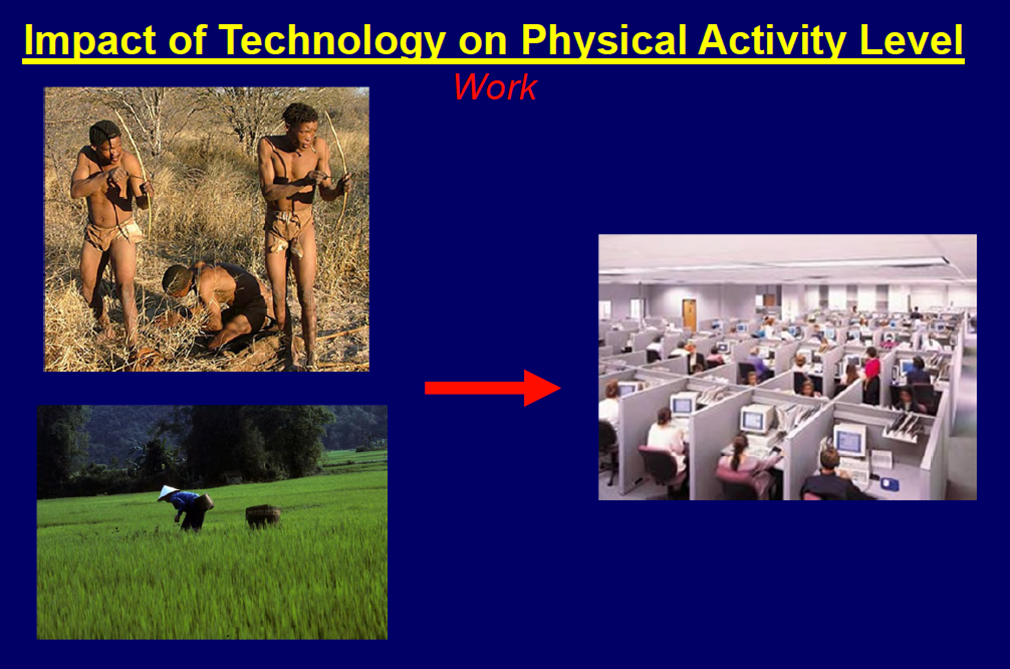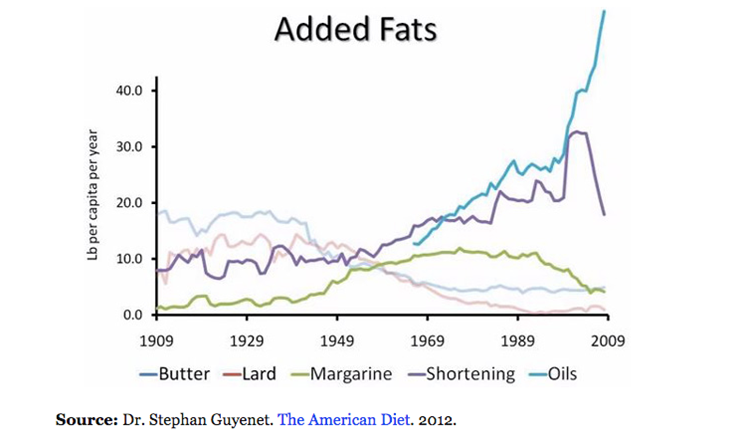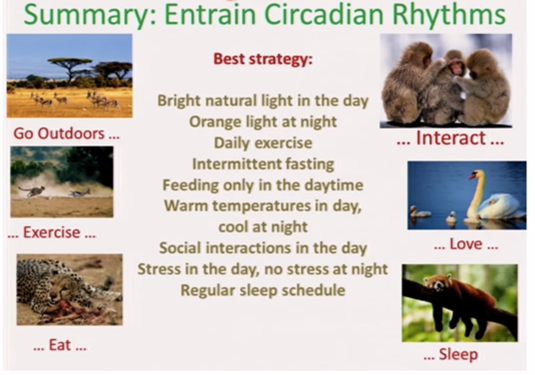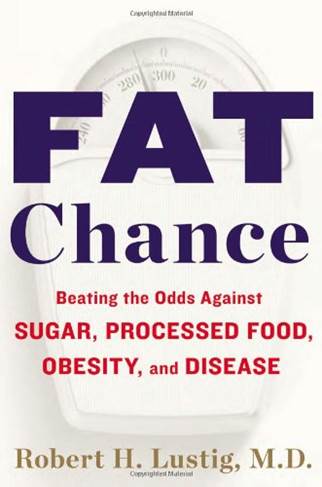Lecture by Mark Pettus transcribed by Carolann Patterson
How did the fat switch get turned on? and why isn't it turning off?
This week's Creating Health lecture focuses on Metabolism, Insulin Resistance and Metabolic Syndrome.
The learning objectives of the lecture will be to examine the drivers of Weight Gain, Insulin Resistance and Metabolic Syndrome; the relationship between macro-nutrient content, lipogenesis [the biologic imperative to store fat] and leptin-insulin resistance; and the relationship between Biology and Behavior.
Four essential clinical pearls will emerge from tonight's lecture. Take note!
- Calorie restriction decreases metabolic rate, enhances hunger and reduces the drive to move. "Eat less-do more" is not a successful or sustainable strategy.
- Different macro-nutrients produce different effects in thermogenesis, hormone regulation, and satiety.
- Quality of calories is MUCH more important than quantity
- The biologic goal is to reduce leptin and insulin resistance.
Last week I showed the image of "McPaleo Man" to illustrate "Health as a byproduct of gene-environment compatibility." There is a growing incompatibility between ancestral gene programming and modern 21st century lifestyle.
Healthy living happens in the healthy choices we make that align our modern life with our genes. Just because we are genetically pre-disposed to a condition does not mean we are prisoners of our genes.
How does a Functional-Systems Biology Model differ from the way we are currently looking at our health?Instead of looking at "the leaves" of disease to determine treatment, Functional Biology turns the model on its head and shifts analysis to begin at the roots, to find the root causes. Once we discover the root causes we can change our biology by changing our behavior. Our DNA is more malleable than we think: we are NOT locked in to our genetic legacy.
Leaves: Disease [how things appear] - Pre-Diabetes, Diabetes, Obesity, Metabolic Syndrome, Heart Disease, Stroke, Depression, Autoimmunity, Alzheimer’s, Cancer, Autism, ADD, Hypertension
Stem: Core Metabolic Imbalances [what drives them] - Inflammation-Immunomodulation, Fight-Flight (HPA axis), Microbiome (Gut-Immune), Detoxification, Hormonal, Insulin resistance
Soil: Root Causes [what are their origins] - Gene-Epigenome Environment, Nutrition, Movement Stress Response, Environmental -toxins, Sleep Social Connection, Traumatic events, Conflict Management Mindfulness, Meaning in Work, Love & Play
Let's set the stage with International Data from World Health Organization & US DHHS, NIH, NIDDK
Global Problem [2005]
- 1.6 billion adults overweaight [age 15+]
- 400 million adults obese
- 20 million children under 5 overweight
Current Global Trends - by 2015
- 2.3 billion adults will be overweight
- 700 million will be obese
US Data: Fast Facts from the National Health and Nutrition Examination Survey [2009-2010], National Institute of Diabetes, Digestive & Kidney Diseases [NIDDK]
- More than 2 in 3 adults is overweight or obese
- More than 1 in 3 adults is obese
- More than 1 in 20 adults is extremely obese
- About 1/3 of children adolescents (6-19) is overweight or obese
- More than 1 in 6 children is considered obese
How do we get FAT?
The prevailing view of "how do we get fat" oversimplifies. While there is some truth, it is not entirely accurate when it states:
- Obesity occurs when a person consumes more calories from food than he or she burns. National Institute of Health, 2008
- Overweight is the result of caloric imbalance (too few calories expended for the amount of calories consumed) and is mediated by genetics and health. US Surgeon General, 2008
Weight gain is more than just "calories in, calories out" and it is not caused by genes. We get fat through the choices we make:
- Not exercising at all or exercising the “wrong” way [i.e, continuous tread mill isn't effective]
- Working indoors, not being outdoors [hunting-gathering]
- We move less - Walking less, driving more
- Poor diets, loaded with processed food [See what American eats in the Top 20 list below]
- Eating poorly, unethically raised chickens and meats [their stressful environment passes on to us]
Top 20 Sources of Calories in the American diet [2013] - illustrates dietary choices in America
We consume more calories than we ever did before and they are not quality calories.
- Grain-based desserts (138)
- Yeast breads (129)
- Chicken & chicken mixed dishes (121)
- Soda/energy/sports drinks (114)
- Pizza (98)
- Alcoholic beverages (82)
- Pasta & pasta dishes (81)
- Tortillas, burritos, tacos (80)
- Beef & beef mixed dishes (64)
- Dairy desserts (62)
- Potato/corn/other chips (56)
- Burgers (53)
- Reduced-fat milk (51)
- Regular cheese (49)
- Ready-to-eat cereals (49)
- Sausage, franks, bacon & ribs (49)
- Fried white potatoes (48)
- Candy (47)
- Nuts/seeds & nut/seed mixed dishes (42)
- Eggs & egg mixed dishes (39)
In addition to poor dietary choices, the ongoing dietary recommendation to reduce fat intake is not making Americans skinnier, or healthier. In fact, just the opposite. The charts below show the most significant change noted in the growing gap between increased carbohydrate consumption and decreased fat consumption and its correlation to growing obesity rates:
Don't blame butter for obesity. Crisco oil replaced butter, lard and tallow, thanks in part to Ancel Keys' research [see below]. Proctor & Gamble's Crisco was the leading sponsor of the American Heart Association campaign to reduce fat. Studies later revealed substituting polyunsaturated vegetable oils for saturated fats increased cardiovascular risks and deaths from all causes.
The New York Times poses a provocative question: “Are we fat because we eat too much or do we eat too much because we are fat?”
The pendulum is starting to swing towards how certain foods we eat interfere with our biology, producing excess Insulin and Leptin.
There is no obesity gene. There is no diabetes gene. The growing public health problem of obesity and diabetes is not driven by genes. The quality of the food we choose to eat impacts our weight. Food composition affects metabolism.
Different foods produce different changes
- in thermic effect [this is your metabolism. Fats produce higher metabolic rate];
- in direct hormonal responses [Fat lowers insulin/carbs raise insulin. Fat lowers Leptin/Carbs raise Leptin];
- in gene expression patterns [Epigenetic response - foods impact our Book of Life. Environmental factors need to change so that the On/Off switch can turn off];
- in the microbiome [drivers of hunger have little to do with calorie counting].
Less Carbs and More Fat, please. TEE [Total Effect of Exercise] differed by approximately 300 kcal/day. People on the low-carb + high-fat diet burned 300 kcal/day more than those in the low-fat + high-carb group, an effect corresponding with the amount of energy typically expended in 1 hour of moderate-intensity physical activity. Just goes to show:
A calorie is not a calorie…poor quality food causes a metabolic shift so that our behavior becomes a consequence of our biology. If we improve the quality of the food we eat, we change the outcome. Poor dietary choices lead to Obesity, Diabetes and Metabolic Syndrome...
What is Metabolic Syndrome? Metabolic syndrome is not a disease in itself. It is a group of risk factors - high blood pressure, high blood sugar, unhealthy cholesterol levels and abdominal fat associate with the following readings [Source: A.H.A]:
- Waist Circumference > 35” in women and > 40” in men
- BMI > 30 (= obese)
- Elevated blood pressure: > 130/85
- High triglycerides: > 150 mg/dL
- low HDL: < 40 mg/dL men, < 50 women
- Elevated fasting glucose: >100 mg/dL
The National Health and Nutrition Examination Survey (NHANES) 2003-2006, studied more than 3400 adults over age 20 and discovered the overall prevalence of Metabolic Syndrome in 34% of those studied. Metabolic Syndrome increased with advancing age and weight and there is a higher prevalence of Metabolic Syndrome in Black and Mexican American females.
What are the consequences of Metabolic Syndrome? Metabolic Syndrome is prevalent in 34% of Americans aged 20+ and can lead to the following:
- Type II Diabetes
- CVD/CAD
- Dementia
- Stroke
- PCOS and infertility
- Fatty Liver [NAFLD] see below
- Breast, colon, prostate & other cancers
- Psoriasis, rheumatoid arthritis, gout
NAFLD [Non-Alcoholic Fatty Liver Disease] was not described until 1980 and has grown to become one of the most common diseases in America present in 45% of all Latinos; 33% of all Caucasians; and 25% of all African Americans. 5% of total cases progress to NASH [Non-alcoholic SteatoHepatitis, liver inflammation and damage caused by a buildup of fat in the liver]. 25% of NASH cases progress to Cirrhosis [chronic liver damage leading to liver failure]. NAFLAD is 100% preventable.
Among adults with type 2 diabetes, there was an estimated 1.6-fold increased prevalence for cancers of all sites among men and a 1.8-fold increase among women who reported being diagnosed with diabetes 15 or more years ago compared with those reporting diabetes diagnosis less than 15 years ago. Diabetes Care Jan 2013.
For breast cancer, 1.5–2.4 risk comparing women with highest levels of insulin to normal levels. Journal of the National Cancer Institute.
That's Ancel Keys on the left. He was an expert on Nutrition in the 1950's and advised the nation that "Fat is Bad." 64 years later butter can take its revenge...and so can John Yudkin...
This is John Yudkin. At the same time Keys was administering nutritional "liposuction" to an entire nation, Yudkin was banished for calling attention to sugar as THE issue, not fat. Yudkin could not get published until 1972 and his book Pure White and Deadly was largely forgotten until Robert Lustig's ground-breaking lecture Sugar: The Bitter Truth brought it to the forefront when hailing Yudkin's work as "prophetic". Forty years after his book was finally published, we're wising up to the bitter truth about sugar...
Consuming fructose-sweetened, not glucose-sweetened beverages increases visceral adiposity and lipids and decreases insulin sensitivity in overweight/obese humans. "Fasting plasma glucose and insulin levels increased and insulin sensitivity decreased in subjects consuming fructose but not in those consuming glucose."
“Dietary fructose specifically increases DNL, promotes dyslipidemia, decreases insulin sensitivity, and increases visceral adiposity in overweight/obese adults.” Stanhope KL et al. Journal of Clinical Investigation. 2009 May 1; 119(5): 1322–1334
America sure stand outs. The US is THE world leader in...
We've covered Sugar and Fat, let's move on to Carbohydrates [CHOs]
Ian Spreadbury points to the single greatest difference between ancestral and modern life: acellular carbohydrates. Wheat just ain't what it used to be.
Carbohydrate density isn't the lightest subject, but the grid below illustrates the carbohydrate choices we make. Stay away from those Rice Cakes!
Leptin - tells you you're full
Leptin is the appetite hormone. Many obese people appear to become resistant to Leptin. A healthy Leptin function signals satiety in the brain [hypothalamus] and promotes a “readiness” to move.
Disrupted Leptin signalling causes Leptin Resistance which leads to weight gain, hard-to-control hunger, and a deep desire to minimize activity. Inflammation is associated with Insulin Resistance. Insulin Resistance is associated with Leptin Resistance.
Fructose wasn't always available everywhere in the world 24/7. It was only available at harvest and was necessary "survival" trigger to induce Insulation Resistance in order to store fat through the winter. Fructose stimulates weight gain. We have evolved to be rewarded for caloric-dense sugary fat foods as part of survival, an adaptation challenged in modern times.
Kalle et al. Am J Clin Nutr; 2007:851:1417-27
Different carbohydrates produce unique genomic responses:
High-Glycemic Carbs [macronutrients]: Dozens of genes switched ON as 62 genes regulate increased inflammation, stress, and immune responses.
Switch to Low-Glycemic Carbs [beans, legumes]: Same genes are silenced. Genes regulating insulin production are switched OFF.
The Microbiome…an evolving story
The microbiome has evolved with humans to allow survival. It provides important functions in digestion, immunity, metabolism and detoxification. These "bugs" have allowed us to survive. From a cellular perspective, our body is 10% human and 90% microbial. The gut microbiome in each person contains 100-150 times as many genes as the human gene pool and over 99% of the genetic diversity in our bodies is due to microbial colonization.
Gut microbes can drive appetite. Low Microbial Diversity in the gut drives obesity. Colonizing germ-free mice with the intestinal microbiome from obese mice led to an increased total body fat despite lack of change to diet.
Dirt is Good for Diversity. Increased diversity within the microbiome is seen with decreased hygiene. Early and diverse exposure to germs is key to a “healthy microbiome.”
Increased carbohydrates [CHO] digesting microbiome in populations with higher CHO intake. Reduced microbiome diversity is seen in obesity, IBD, autism spectrum.
Diet is a powerful factor that can shift the gut microbiome.
70% of the immune system is located in the gut epithelium.
Now that we've explored why we get fat, how can we get "Un-Fat"?
Move More - Motion is the Lotion!
- HIT [High Impact Training], Resistance training, and dance
- Muscle as a metabolic engine
- Cortisol, endorphins and dopamine
- Positive Epigenetic effects on reducing inflammation, increasing insulin sensitivity and energy efficiency
- Enhanced strength, resilience, balance, concentration, mood
- Decreased cardiovascular disease, diabetes, cancer risk
- Longevity and quality of life profoundly enhanced
Stress Less
- Meditation, prayer, relaxation response, guided imagery, yoga, tai chi, biofeedback, gratitude journal
- HRV-HeartMath
- Decreased cortisol, flight-fight response, BP
- Increased parasympathetic tone
- Improved mood, concentration, pain tolerance, resilience
- Positive epigenetic effects on inflammation, insulin sensitivity and energy efficiency e.g. mitochondrial health
- Decreased cardiovascular risk
- Enhanced neuro-plasticity [our brains are bendy]
Sleep. It's not a luxury. It's a Necessity.
We used to be a dark planet. Now we've got our lights on all the time. We're sleeping less. Sleep loss leads to weight gain. In animals, disruption of circadian rhythm precedes obesity. In humans, night shift work increases BMI by 15% and risk of obesity by 40%
- Disrupted Sleep-Loss of entrainment [see below for best strategy]
- 15% Americans experience chronic insomnia
- 1 out of 3 has sleep disruption on one or more nights each week
- Major risk factor for many chronic complex diseases
- Neuro-endocrine-immune disruption
- Sleep hygiene
- Obstructive sleep apnea
- Avoid pitfalls of sleeping medications
Zeitgebers "Time Givers" are external cues that drive circadian rhythms. Light, ambient temperatures, social interactions, exercise and meal timing are all known "Time Givers"
Try new strategies to enhance metabolic efficiency and to reduce insulin-leptin resistance. Approach it from all angles:
- Quality of calories trumps quantity of calories
- Cut – reduce sugar-fructose in all its forms
- For obesity, insulin resistance and diabetes, eliminate poor quality carbs and introduce healthy fats
- Whole grains trump refined grain flours, and carbohydrate-dense processed foods
- Reduce omega-6 containing oils, replacing them with healthy fats e.g. extra virgin olive oil, fatty fish e.g. salmon, mackerel, sardines; grass-fed butter and coconut oil; lard, ghee, avocados, nuts and seeds
- Pasture-raised eggs are nutrient dense and a great value
- Consume pasture-raised meats, shellfish, organ meats
- [Organic] Dairy is good provided you are not intolerant and don't have allergies. Fermented yogurt, kefir
- Coconut Oil: Lauric acid; MCTs [medium chain triglycerides], gut permeability improved
- Gut health-microbiome: Elimination trial; pre-probiotics; digestive enzymes
- Motion is the lotion
- Meditation: Lower stress response e.g. meditation, HRV
- Circadian rhythm/entrainment – sleep strategies
Recommended Reading - keep up to date on latest research
For more "news to use" and the science to go with it, visit my website The Health Edge: Translating the Science of Self-Care. To download complete lectures follow this link to BHS Creating Health Wellness Series.

































